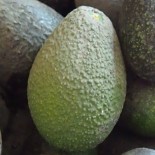Polish girl living in Chile with Chilean family
Simple diary made by Polish girl living in avocado capital of Chile describing living in Chile, with Chilean family, adjusting to the culture, language and differences
All about paltas
Since I have been livig in the National Capital of Paltas and all my Chilean life is about paltas, I think I it is high time to dedicate more attention in my blog for this interesting fruit.
Avocado, Aguacate, Palta, Abacate
The name varies according countries or geographical zones but still we are talking about the same wonderful fruit originally from Central America. However, it was the Incas of Peru who disseminated the species southward along the Pacific Coast from Colombia to Peru. The Incas named the fruit “palta” because it came from the province of Palta in Ecuador. Thus today, avocados are known as “palta” in Peru, Argentina and of course Chile.
Avocado – the big picture
There are circa 400 varieties of avocado in the world. Some of them are round, pear shaped, or oblong, and the skin of the fruit may vary in texture and color. The skin may be pliable to woody, smooth to rough, and green-yellow, reddish-purple, purple, or black in color. The flesh of the fruit is greenish yellow to bright yellow when ripe and buttery in consistency, but inferior varieties may be fibrous. The avocado fruit has one large seed which makes up to 10 – 25% of the fruit weight. The fruit of different avocado varieties may vary in moisture and oil content, from less than 5% oil to more than 30% oil. Avocado fruits range from 100 g to 1 kg in weight.
All of available avocados come from one of the 3 distinct races: Mexican, Guatemalan and West Indian. Some important commercial cultivars are hybrids of the various races.
The Mexican race is small with thin, smooth skin. It is also the most cold tolerant.
The West Indian type has shiny skin – thin to medium in thickness. They are the most adapted to warmer climates
Guatemalan race have skins that are thick, hard, brittle and warty. The most popular representant of the Guatemala family is Haas.
Nutrition & health facts
Avocado has high content of vegetable oils, which has antioxidant properties. 75% of the absorbable energy of the avocado is from vegetable fats, of which (67%) are monoinstaturadas as oleic acid. Other fats include linoeico acid and palmitic. Avocado is naturally rich in omega-3 fatty acids – the secret to a healthy heart, a brilliant brain and eagle eyes.
Avocados have no sodium and no cholesterol. Thanks to the high content of monounsaturated Fats (67%) — avocados help control triglycerides in the bloodstream, lower blood cholesterol and control diabetes.hey have 0.5 grams of saturated fat, 3 grams of monounsaturated fat and polyunsaturated fat and 0 grams of trans fat. In fact, the avocado is virtually the only fruit with monounsaturated fat.
Avocados are high in vitamins B, E, and K, and minerals, such as potassium (458 mg/100 g) and magnesium. They are rich in folic acid and vitamin K (the green vegetables) and is a good source of Bitamina B6, C, E and pantothenic acid.They are also high in monounsaturated fatty acids and oleic acid, which can help reduce the risk of heart disease. Avocados also contain fiteosteroles, which have anti-inflammatory properties, anti-tumor properties, bactericides, and fungicides.
They are an excellent source of fiber (75% insoluble, 25% soluble). Moreover, when used instead of other fats, can be a part of a weight loss program.
Avocado in Chile – some facts
Chile is the second-largest avocado producer in the world. This is possible largely due to the country’s nutrient-rich soil, temperate climate, and natural boundaries to pests (ocean in the west and high mountains in the east). The avocado tree must be grown in a warm climate, and requires loam or sandy soils that are free of clay. Moreover, very important is high-quality water and lack of frost. Since 1988 avocado cultivation increased rapidly mainly through country’s successful export of the fruit mainly to the USA (today 70% of all palta export is to the USA).
Today there are approximately 29,000 hectares of palta trees in Chile. The total cultivation spread between the Coquimbo to the O’Higgins regions.
The biggest avocado producing zone is Region Valparaiso, where Quillota–La Cruz and La Ligua–Cabildo Valleys are key production zones. These zones each present the perfect climate condition for paltas to bust and receive high quality water from the Aconcagua, Petorca and Ligua rivers. Hass, Fuerte, Negra de la Cruz, Bacon, Edranol, and Zultano are palta varieties growing in Chile. However Hass is the most popular palta type. There are more than 26 thousand hectares of Hass avocados planted in Chile. Its cultivation is mostly concentrated in the Valparaiso Region (Region 5)
The distribution of Hass cultivation per region is as follows:
Region 4: 11%
Region 5: 67%
Metropolitan Region: 18%
Region 6: 4%
Recipes – not only guacamole
Probably, avocado is the most know as a ingredients of the famous Mexican dish guacamole. However, thanks its taste and texture it can be used in uncountable way. True its high at content it is perfect butter and spread substitute. No surprise it is so popular here in Chile as an addition to bread or so famous completos. Its great in salad, soup. Can be served as dessert or can be a base for delicious cocktail, including alcoholic ones.
Check some of the most popular recipes:
http://www.paltahass.cl/index.php?op=f2&lang=ing&core=f
http://www.avocadosfromchile.org/recipes/
http://avocadoloversclubfromchile.com/recipes.php




